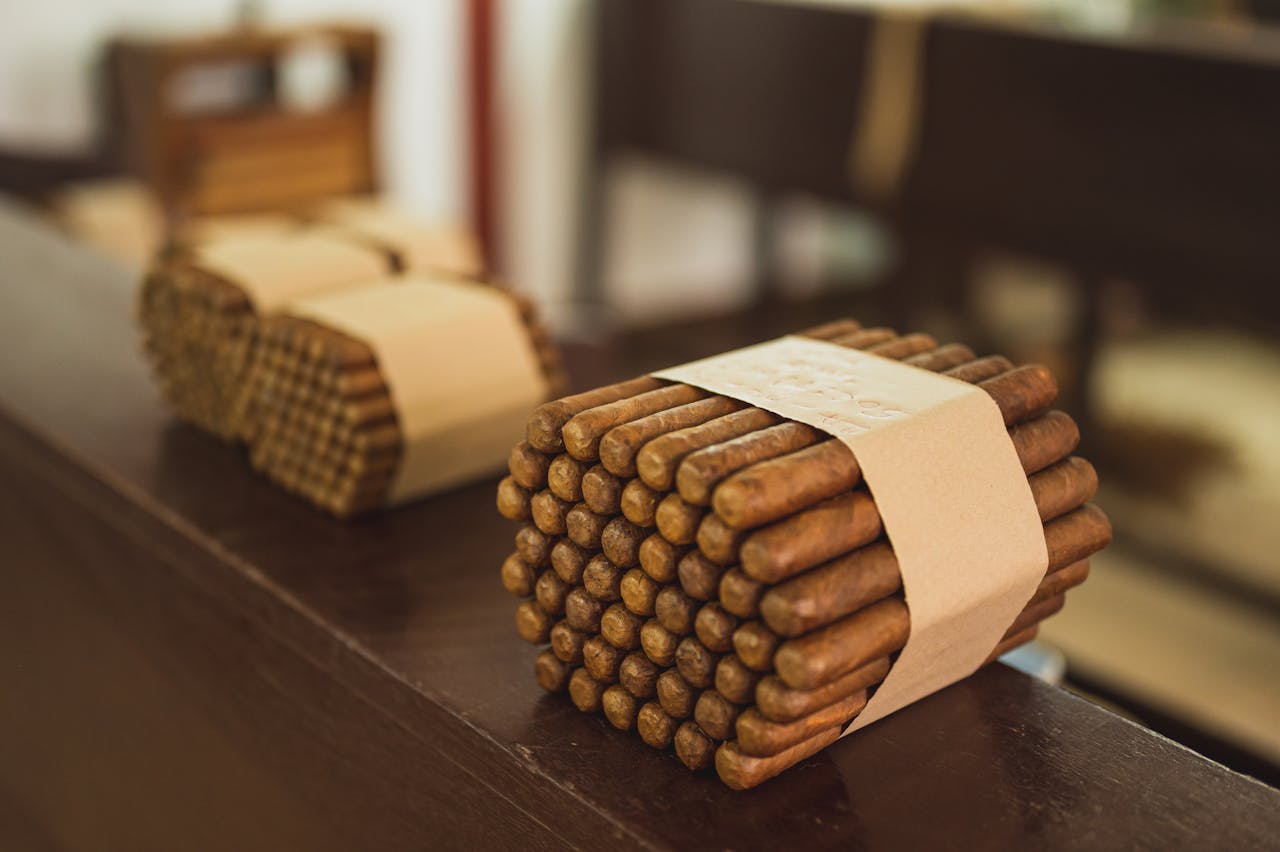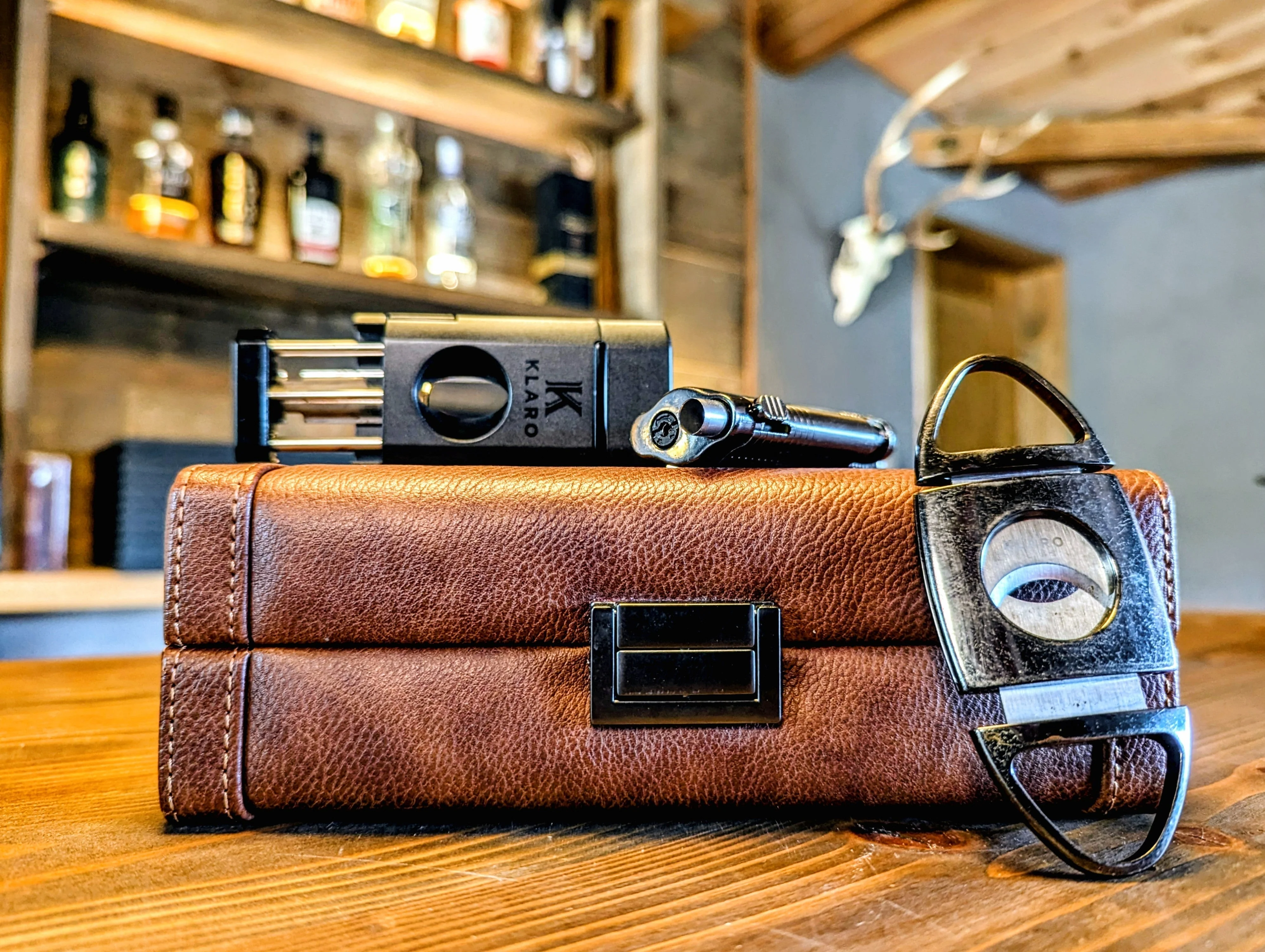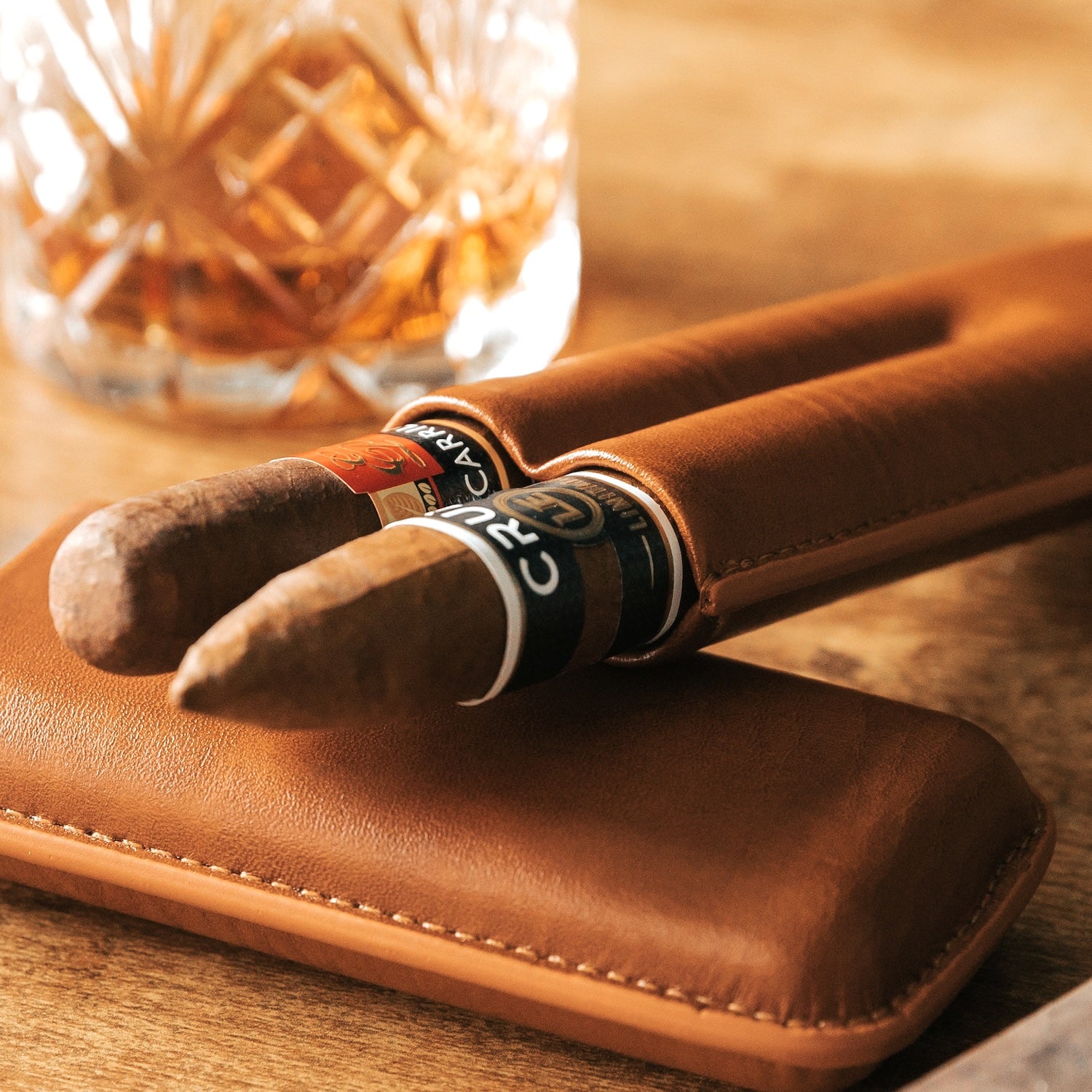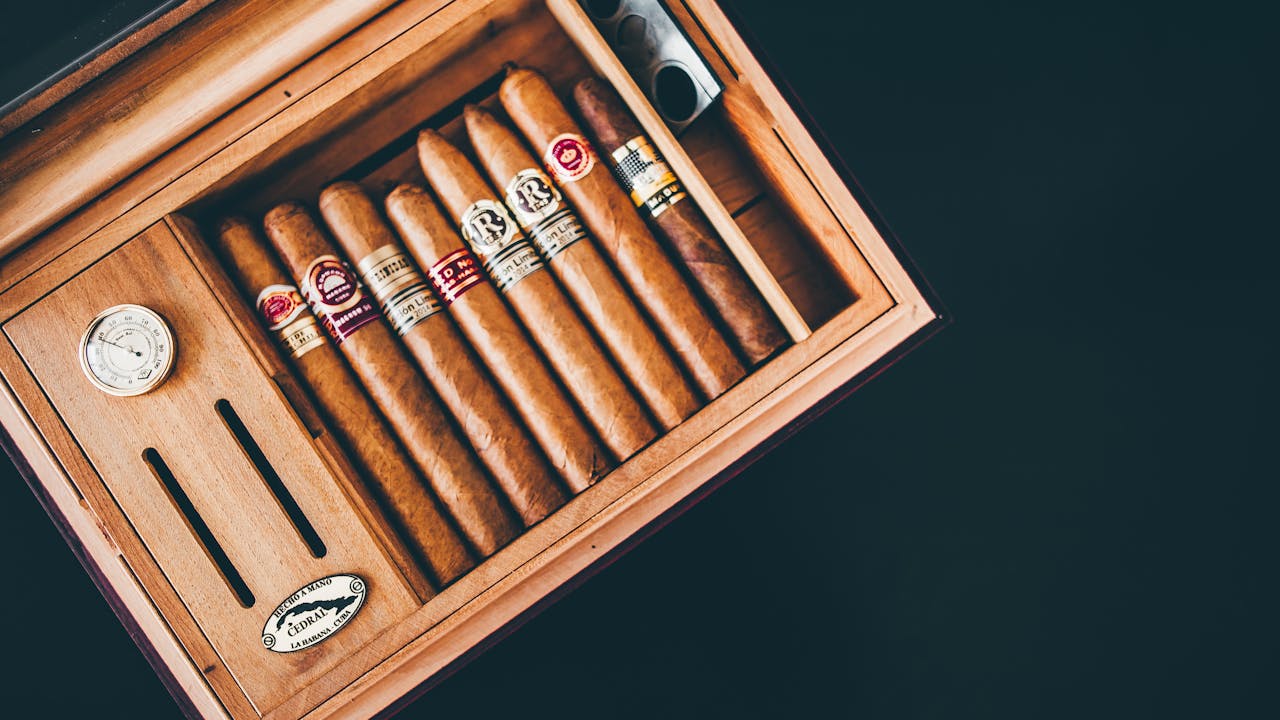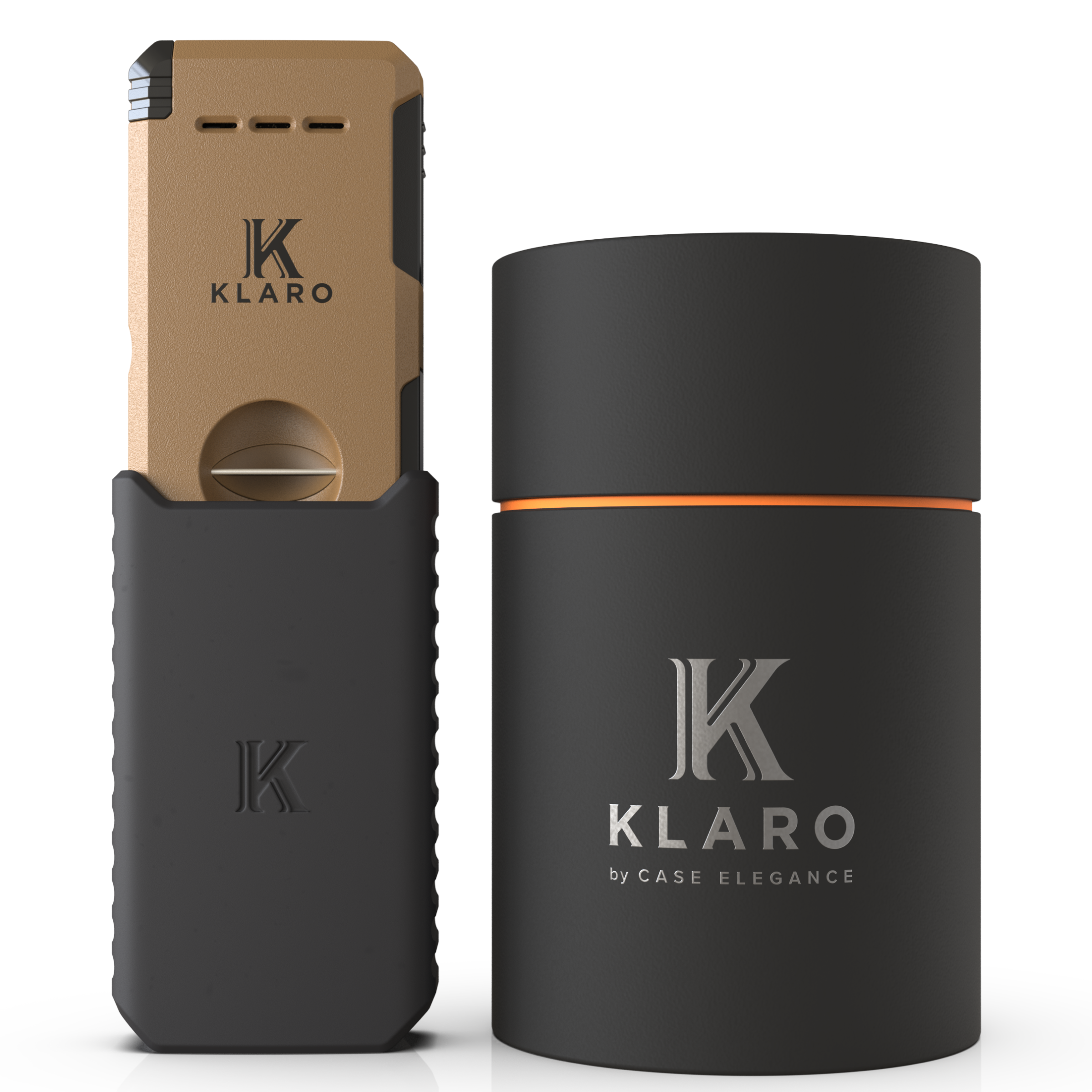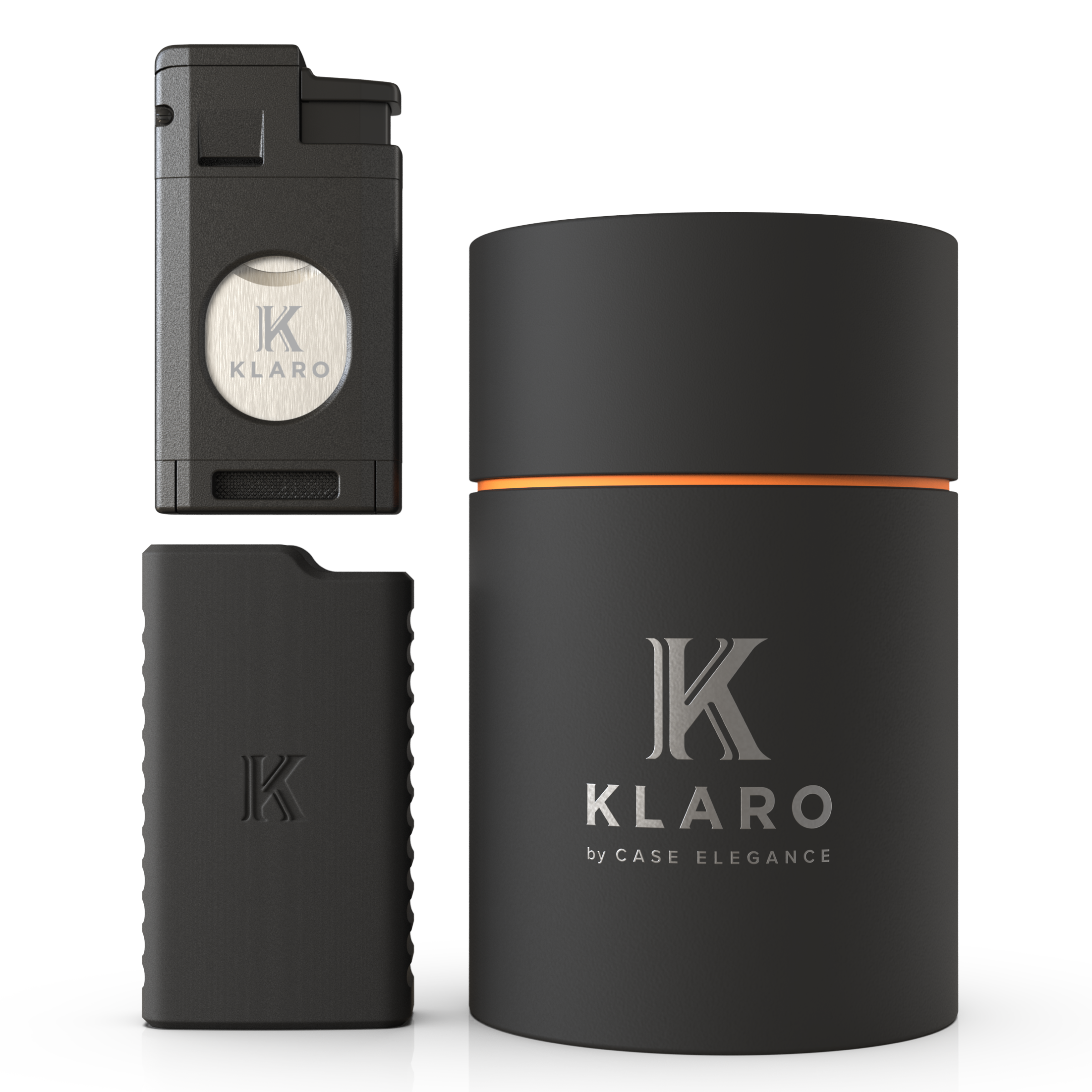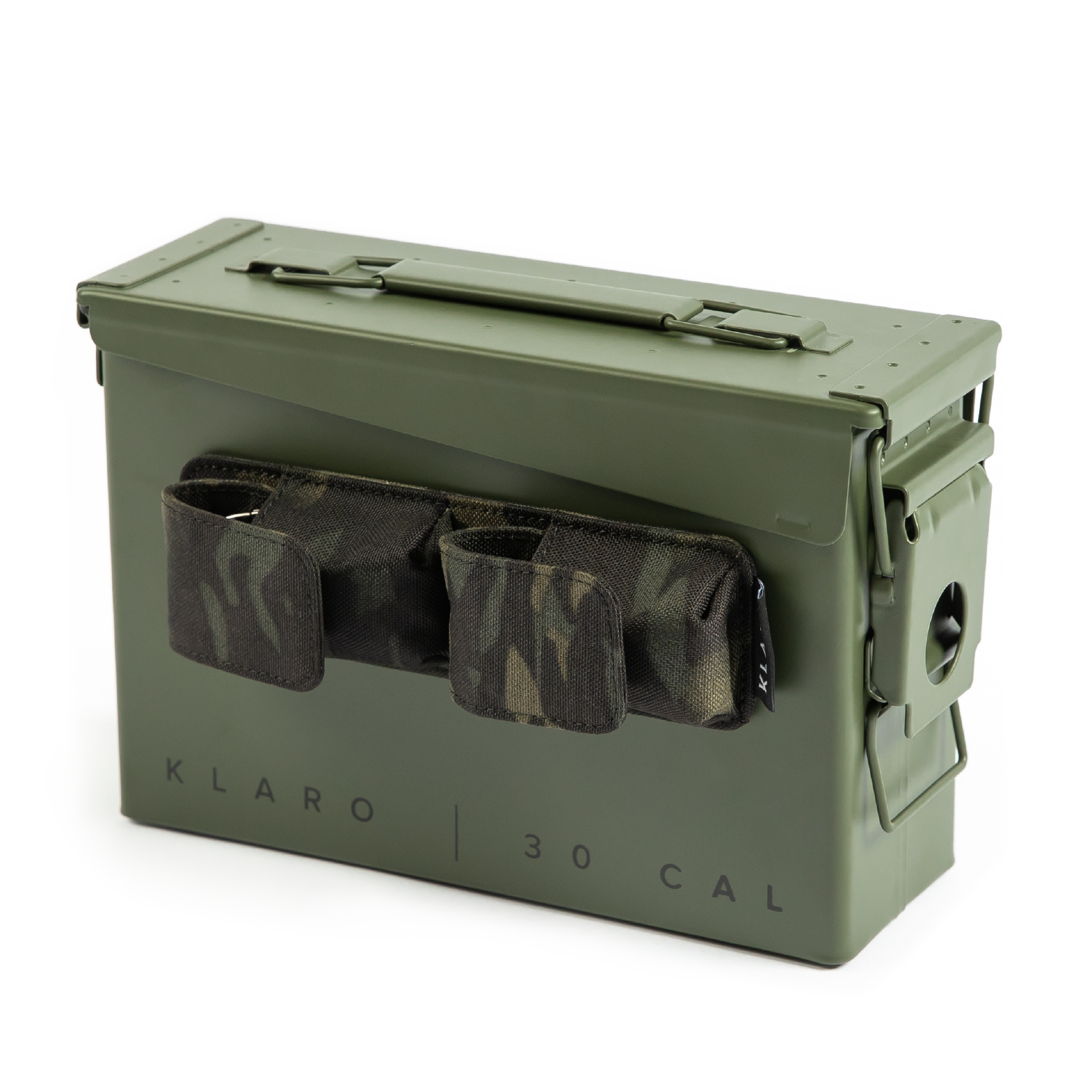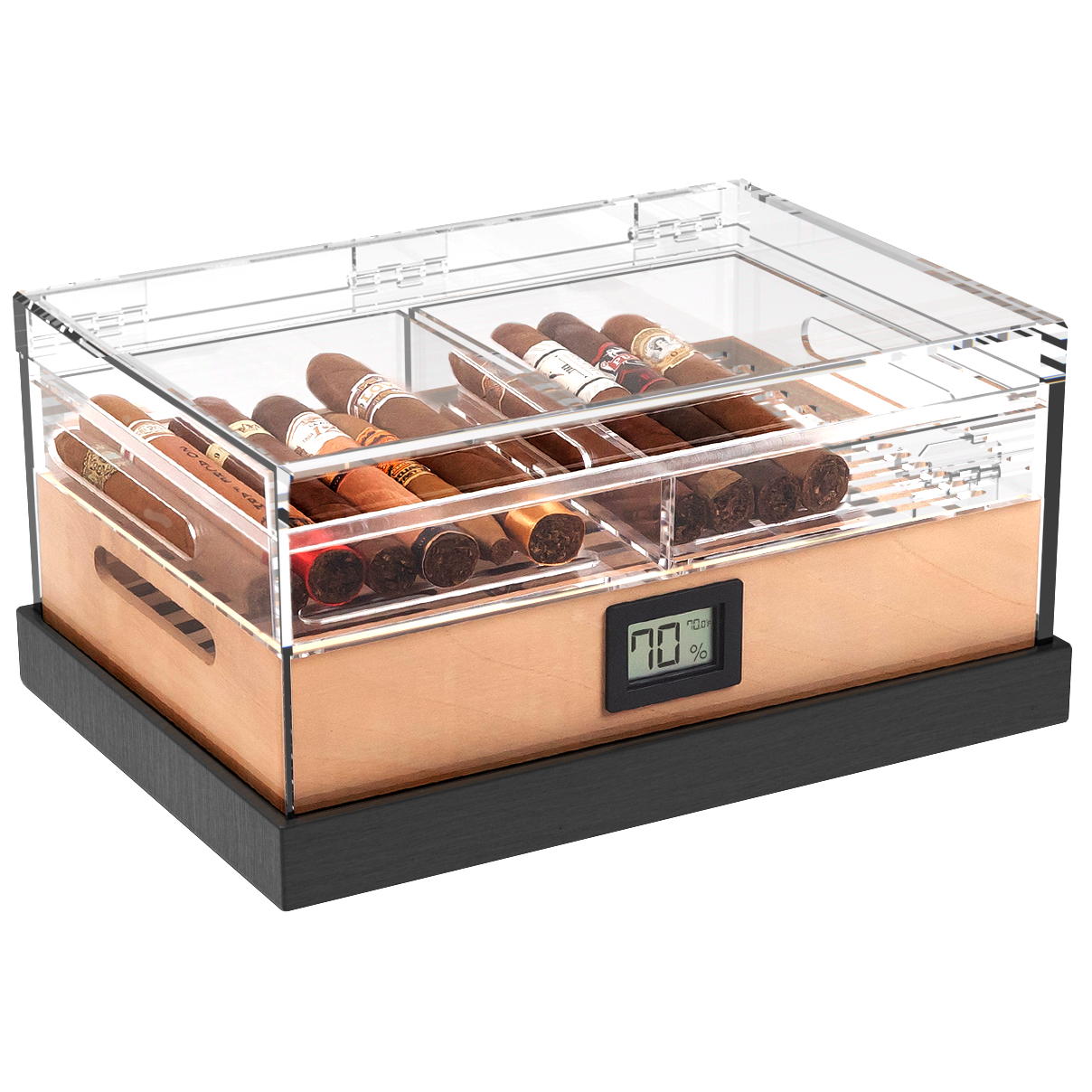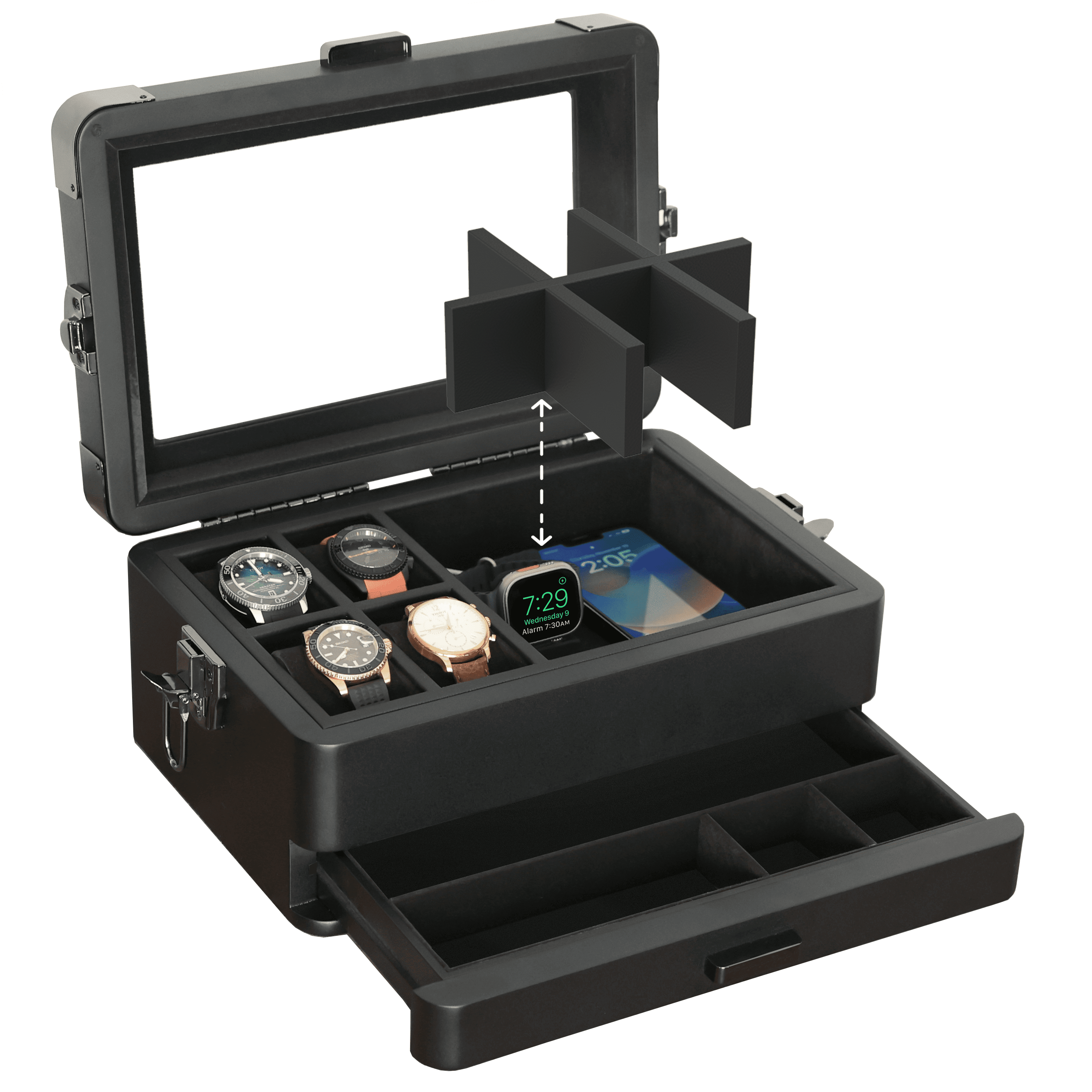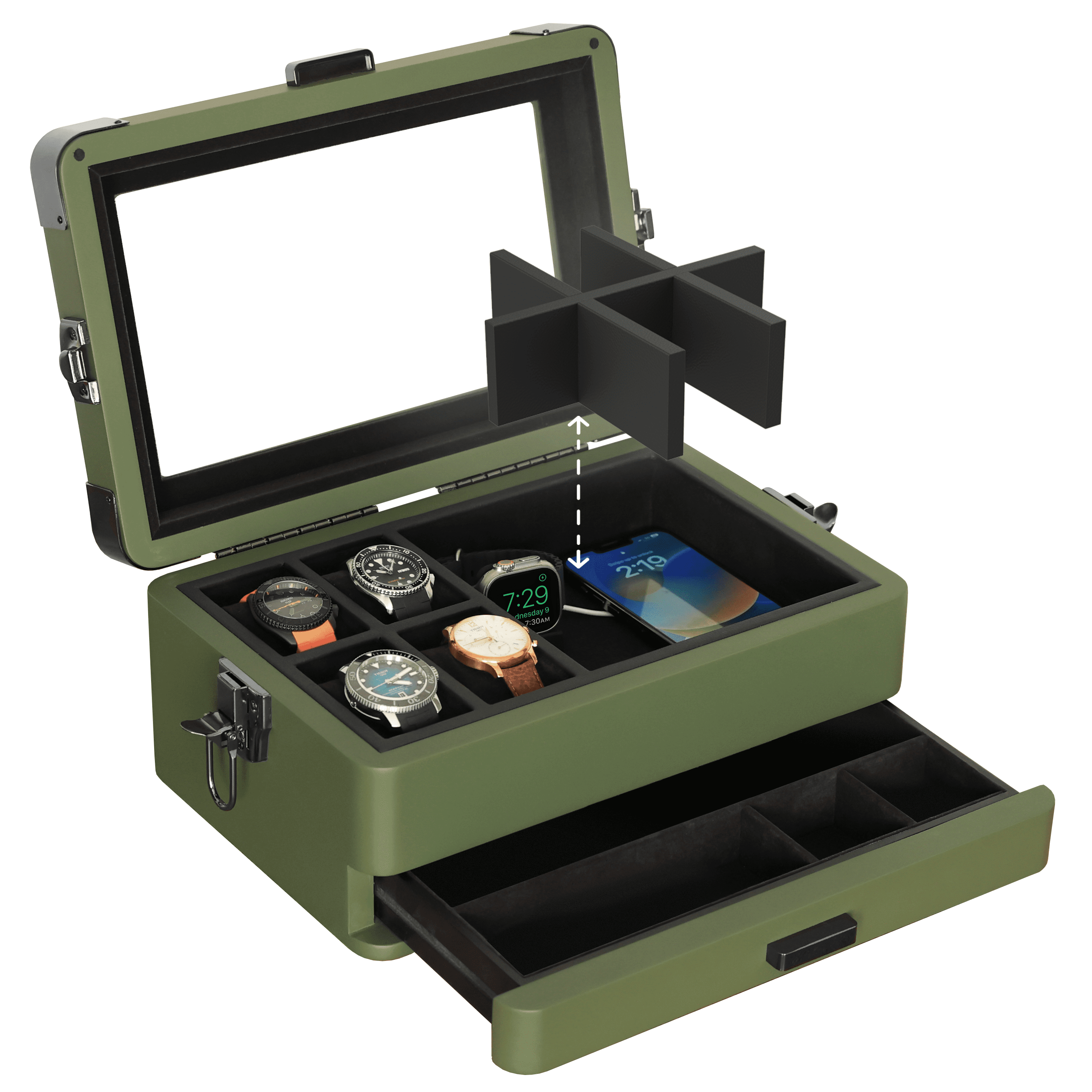For the newly initiated cigar smoker, a world of flavors, aromas, and smoking experiences awaits you. But so many options can feel intimidating rather than inspiring. Browse a cigar retailer’s inventory and the shapes and sizes alone provide enough variables to keep you smoking something new for months. Add different wrappers, blends, brands, and styles, and you quickly discover thousands of options. But what is the best cigar for beginners?
Well, there’s more involved than finding a blend that appeals to most palates and preferences. The best cigars for beginners should introduce you to core flavor elements you are likely to experience in other cigars. You can build upon these basic flavor profiles and use them as a foundation. Furthermore, you want to choose a cigar that doesn’t overwhelm you with strength or size.
We cover all that and more in this guide to the best cigar for beginners!
Understanding Cigars

Read popular cigar reviews, and you’ll find descriptions akin to a wine or cheese tasting. Notes of black pepper and cedar, or dark chocolate and pistachio. These tasting notes comprise the cigar’s flavor profile. A captivating cigar flavor profile will morph as you smoke it, introducing new olfactory and flavor notes as you smoke. This, in combination with a cigar’s strength, size, and duration, informs what smokers prefer in a cigar.
Much goes into a cigar's flavor profile, including the age of the tobacco and the curing process, but the type of tobacco used in the blend is most significant. Each cigar is made of three main components: a wrapper, binder, and filler. The master blender can use the same type of tobacco for all three components, or they can mix and combine different types of tobacco for virtually limitless combinations. The wrapper is responsible for the bulk of the flavor, which is why cigar wrappers have their own names (ie. Connecticut, Habano, Maduro).
Types of Cigars
Finding a good introductory cigar starts with understanding cigars and how they differ from one another. Elements like shapes, wrappers, and fillers vary between cigars. Plus, the more familiar you are with cigar terms, the better you’ll be able to describe your preferences.

Cigar shapes and sizes determine both smoke duration and flavor concentration. A Robusto is a popular choice for its shorter, flavorful smoke, lasting around 30-45 minutes. The Toro offers a slightly longer smoke with a balanced experience, while the Churchill provides a more extensive, layered session ideal for those who prefer to linger. For a quicker, refined option, Panatela cigars are slim and lightly flavored.
The cigar wrapper—its outermost leaf—plays a significant role in flavor. Natural wrappers provide mild-to-medium flavors, often earthy and sweet, while マデュロ wrappers are darker, delivering richer, bolder notes like chocolate or coffee. Connecticut wrappers are known for their smooth, creamy profile, making them ideal for milder smokes, whereas Habano wrappers bring spice and full-bodied flavors to the experience.
Inside the cigar, the filler can be long-filler, made from whole leaves that deliver a premium, even burn, or short-filler, which uses chopped tobacco for quicker, often machine-made cigars. Blends also vary. Single-country blends focus on the flavors of one region, while multi-country blends combine tobaccos from multiple origins to build complex, layered profiles. These elements combined make for a diverse array of cigars suited to different tastes and occasions, enriching the experience for cigar enthusiasts.
Cigar Strength and Flavor Profiles
A cigar’s strength is an important factor to consider when finding one best for beginners. Cigars are often classified as mild, medium, or full-bodied. This typically refers to the intensity of flavo
Do cigars have nicotine? Certainly. But the levels can vary.
Just as coffee strength doesn’t necessarily correlate with caffeine content, cigar body (mild, medium, or full) doesn’t necessarily indicate nicotine strength. With coffee, lighter roasts often retain more caffeine despite having a milder flavor profile. Meanwhile, darker roasts taste stronger but may have slightly less caffeine due to longer roasting.
Similarly, mild cigars may taste lighter and smoother, but they can still contain comparable nicotine levels to full-bodied cigars, which have bold, intense flavors.
In cigars, nicotine strength often depends more on the tobacco type and size of the cigar than on body alone. While full-bodied cigars might feel stronger on the palate, they don’t always equate to higher nicotine, just as dark roasts in coffee don’t always deliver more caffeine.
Mild Cigars
Mild cigars are generally smooth, light, and easy on the palate, making them ideal for beginners or smokers who prefer subtle flavors. Often wrapped in Connecticut wrappers, mild cigars have notes of cream, nuts, and mild spice. They’re a popular choice for early-day smoking or casual enjoyment without overwhelming the senses.
Medium-Bodied Cigars
Medium-bodied cigars offer a balance of flavors with increased complexity and depth compared to mild cigars. Often featuring a mix of Connecticut and Natural wrappers, these cigars have flavors like cedar, leather, and earthiness, providing a richer experience that appeals to both newer smokers and seasoned enthusiasts.
Full-Bodied Cigars
Full-bodied cigars are known for their bold, intense flavors and strong presence, often featuring Maduro or Habano wrappers. These cigars are preferred by those seeking a robust experience, offering deep notes of pepper, coffee, chocolate, or even spice. They’re best enjoyed by seasoned smokers who appreciate powerful, layered profiles that make a lasting impression.
Flavor Notes
As you can see, certain cigar strengths are more likely to carry certain flavors. For example, full-bodied cigars are liklier to carry chocolate notes than mild cigars. But tasting notes can vary widely. That’s part of the joy of smoking cigars. We recommend keeping a cigar journal so you can track what you smoked, enjoyed, and want to smoke again.
Below are some baseline flavor notes to recognize and decipher as you explore new cigars.
- Spicy
- Sweet
- Creamy
- Robust
- Woody
- Earthy
- Funky
Another aside: Smokers often detail their experience by dividing the cigar into thirds. In fact, cigar flavors naturally evolve during the smoke with first, second, and final thirds bringing different nuances. Taking time to savor each part can grow your appreciation. Additionally, you might pay attention to how the different transitions enhance or interrupt your overall experience. Read this review of the パンチ Diablo to see how the author describes the smoking experience in thirds.
Choosing Cigars Based on Occasion

There are many occasions that warrant a cigar. But by no means do you need only smoke a cigar when celebrating or commemorating an event. Instead, you’ll hear us talk a lot about EDCs, for example (or every-day-cigars), which will typically be consistent, medium, and not too abrasive in strength or flavor. Casual cigars like these might not be as experimental as some blends—and they likely won’t last extremely long. Indeed, some cigars are better for casual smoking while others you might save for special occasions, or to pair with a meal or a drink.
Pairing cigars with drinks like whiskey, wine, or coffee can elevate the experience by complementing or contrasting the flavors of both. For beginners, here are some tips:
Start Mild and Match Intensity: Pair lighter, milder cigars with lighter drinks. A mild Connecticut cigar pairs well with a smooth, low-proof whiskey, a light-bodied white wine, or a mellow coffee. As you explore stronger cigars, like medium or full-bodied options, consider richer drinks to match, such as an aged bourbon, red wine, or espresso.
Consider Complementary Flavors: Try to align flavors for a harmonious pairing. For example, cigars with chocolate or coffee notes complement bourbons with vanilla and caramel or red wines with earthy, dark fr
Experiment and Take Notes: Personal taste is key, so don’t hesitate to experiment with different pairings. Take note of which combinations enhance flavors, and over time you’ll develop preferences for specific cigar and drink pairings.
Ultimately, pairing cigars with drinks is about balance and personal preference, so enjoy experimenting to find your ideal match!
Cigar Brands and Recommendations
There are many trusted legacy cigar brands that have built a reputation on premium, consistent cigars. Brands like Montecristo, Arturo Fuente, Davidoff, and others have great introductory options, and you almost can’t go wrong selecting one of these cigars.
With so many types of cigars and brands, it’s helpful to distinguish between legacy and boutique cigar brands. Legacy and boutique cigar brands offer distinct experiences in the cigar world, each with unique appeals.
Legacy brands are well-established names with decades, or even centuries, of history and craftsmanship. Known for consistency and quality, brands like Cohiba, Montecristo, and Romeo y Julieta have built loyal followings by perfecting traditional blends and staying true to time-honored methods. These cigars provide a reliable experience, often reflecting classic flavor profiles and smooth smoking characteristics, making them a go-to for many smokers who value tradition.
In contrast, boutique brands are newer, smaller-scale operations that bring an innovative, experimental approach to cigar making. Typically produced in limited quantities, boutique cigars often incorporate rare or specially aged tobaccos, blending different varieties to create unique flavors. Brands like Foundation, Crowned Heads, and Warped push boundaries by introducing new flavor profiles and focusing on small-batch quality. Boutique cigars cater to smokers seeking a fresh, distinct experience with more intense, complex flavors and a touch of exclusivity.
For smokers, choosing between legacy and boutique brands is often about preference. Legacy brands offer reliability and tradition, while boutique brands bring novelty and variety. Both enhance the cigar landscape, allowing enthusiasts to appreciate the timeless appeal of cigars while exploring the possibilities brought by new techniques and creativity.
How to Properly Smoke a Cigar

Smoking a cigar properly is about savoring the experience. Here are a few step-by-step instructions to ensure you prepare and smoke a
- First, cut the cigar’s cap carefully, ensuring a clean cut to allow an even draw.
- Then, toast the foot by holding it above a flame (avoid direct contact with the flame) and rotate it until the end glows evenly.
- Once the cigar is evenly lit, take a few gentle puffs without inhaling the smoke—cigars are meant to be tasted, not inhaled.
- As you smoke, draw slowly and steadily, allowing the flavors to develop with each puff.
- Try to take a puff every minute or so; smoking too quickly can overheat the cigar and affect the flavor, while puffing too slowly may cause it to go out.
- Allow the ash to build up naturally, as it acts as insulation, keeping the cigar burning evenly. Enjoy the experience in thirds, as flavors often evolve throughout the cigar, offering different nuances in each section.
There is more nuance involved—and different smokers will approach basic steps with a number of variations. For example, smokes often argue about the proper ways to cut and light a cigar. Luckily, we have many resources that cover this ground.
リソース
- How to cut and light a cigar
- How to light a cigar
- Do you inhale cigars?
- How to cut a cigar without a cutter
Cigar Storage and Care

Proper storage and care are essential for preserving cigars’ flavor, aroma, and quality. ヒュミドール are specially designed containers used to store cigars, ensuring they remain fresh and enjoyable over time.
The primary purpose of a ヒュミドール is to maintain a stable humidity level, typically between 65-72%, which prevents cigars from drying out or becoming too moist. Humidors come in various types, including desktop, travel, and cabinet humidors, each suited for different storage capacities and needs. Desktop humidors are common for casual smokers, travel humidors are compact and portable, and cabinet humidors are ideal for larger collections.
Maintaining proper humidity is crucial, as cigars are sensitive to changes in their environment. Humidors are equipped with a hygrometer to monitor humidity and a humidification device (like humidification packs or beads) to control moisture levels. Regularly checking and refilling the humidification device with distilled water or propylene glycol solution helps keep cigars in optimal condition.
Cigar aging is a technique that enhances flavors and smoothens the smoking experience, similar to aging wine. When aged in a controlled environment, cigars’ natural oils and sugars develop, producing deeper, more nuanced flavors. Some enthusiasts prefer エージングシガー for months or years to mellow harsher notes and bring out subtle characteristics. However, not all cigars benefit equally from aging; some are crafted to be enjoyed fresh, while others can improve significantly with time. Learn how to age cigars first so you don’t risk ruining a perfectly good cigar.
Building Your Cigar Collection
Finding a good set of introductory cigars is only the beginning. Once you identify brands, blends, wrappers, and sizes that you like, you can begin creating your own cigar collection (with the help of a quality cigar humidor). So how do you get started/
First, explore different flavors, brands, and styles while building a personal reserve. Here are a few tips:
Start a Collection
Select a variety of cigars with different flavors, strengths, and origins to broaden your experience. Try cigars with different wrappers to see what suits your taste. Start with
Essential Accessories
Investing in a quality humidor is essential for proper storage. You’ll also need a reliable cutter for clean cuts, a lighter (preferably a butane torch to avoid flavor tainting), and a hygrometer to monitor humidity. A cigar ashtray with a wide groove and deep bowl completes your setup, ensuring a smooth experience.
Keeping Track of Your Favorites
Recording your cigar experiences helps refine your collection. Use a journal or app to track each cigar’s flavor notes, origin, size, and personal rating. Over time, this helps identify patterns in your preferences, guiding future purchases and adding enjoyment to the collecting process.
For beginners, choosing the right cigar starts with understanding the basics of flavors, shapes, and strengths. Once you have a good understanding, begin exploring! Try lots of blends and styles to see what you prefer. Even once you have a preferred smoke, give a wild card a try every once in a while just to see what boutique and legacy blenders are trying and if there’s any new flavors you might prefer.
Lastly, check out the following resources to learn more about cigars, humidors, humidor accessories, and more:
- What Is A Humidor?
- Everything You Need to Know About トーチライター
- How to Season A Humidor
- Do Cigars Have Nicotine?
- What Does A Humidor Do?

